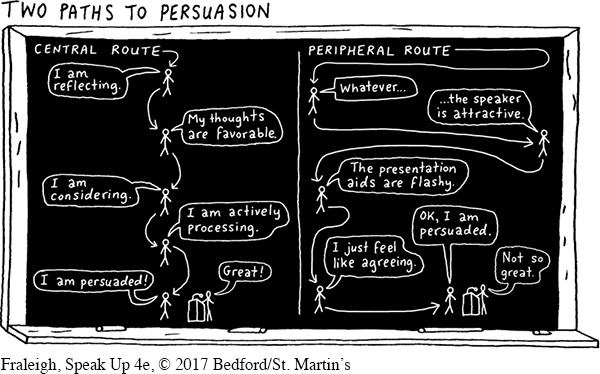Two Paths to Persuasion
How do audience members make a decision to accept or reject a speaker’s persuasive message? Richard Petty and John Cacioppo’s elaboration likelihood model1 provides a well-
Audience members who follow the peripheral route do not actively process your message (low elaboration). Instead, they’re more easily influenced by cues that are tangential, or peripheral, to the message’s content.5 Such cues may include the likeability or attractiveness of the speaker, flashy presentation aids that add little to the message, or aspects of the speaker’s delivery. These peripheral factors allow receivers to take an easier path to agreement or disagreement without carefully considering the speaker’s arguments.
